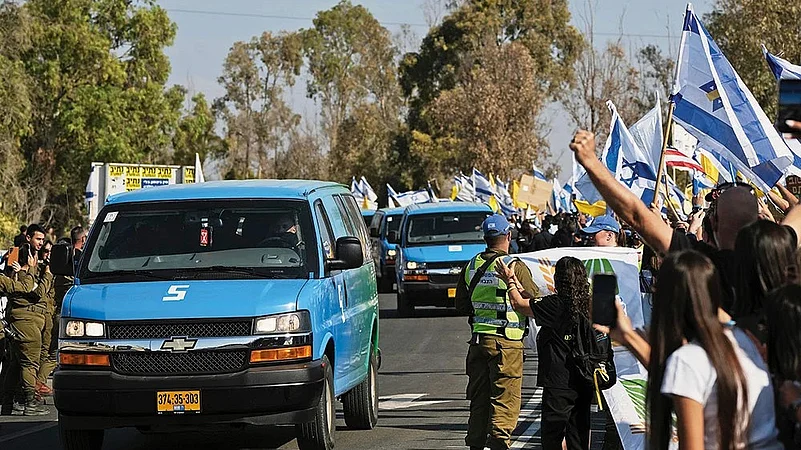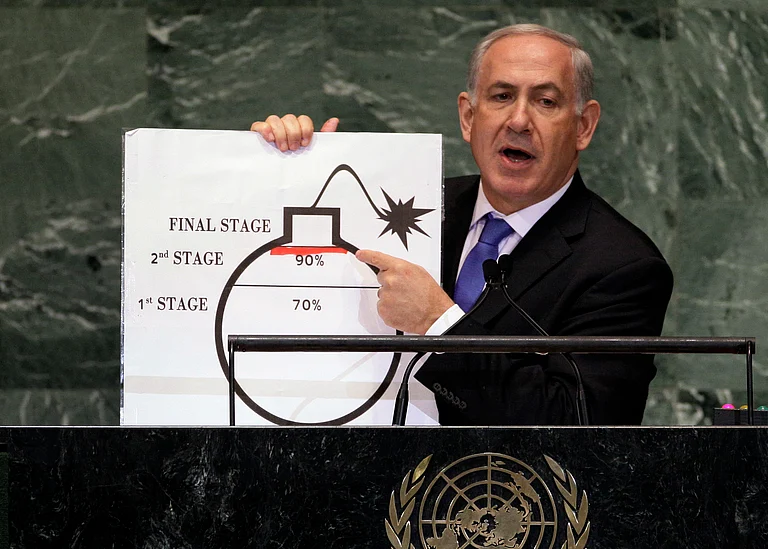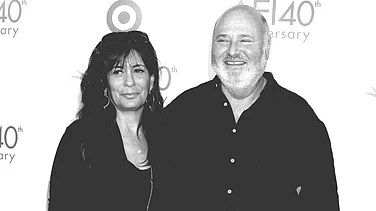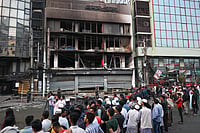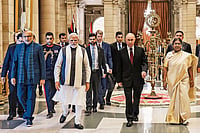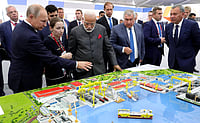
A U.S.-brokered peace deal has brought a rare calm to Gaza, freeing 20 Israeli hostages and 2,000 Palestinian prisoners, though questions remain over who will govern the enclave and whether Hamas will disarm.
The agreement is hailed by Trump as the start of a “golden age,” but critics call it vague and lacking concrete mechanisms for peacekeeping or reconstruction.
Netanyahu, who has not formally signed the deal, remains sceptical of its terms and continues to reject a two-state solution, raising fears that the current truce could be short-lived despite global applause.
For Gaza’s over two million people, it is a rare moment of respite. The incessant bombings over the last two years have stopped; the 20 Israeli hostages are back home. So are the 2,000 Palestinians prisoners. For now, the skies are clear. US President Donald Trump has already taken a victory lap with a whirlwind visit to Israel and Egypt and is basking in global attention, projecting his peace plan as the deal that ended two years of bloodshed.
Yet, beneath the applause, lies an uneasy vacuum. Who will govern Gaza once the dust settles? Will Hamas, though bruised and battered, lay down its arms or is it merely a tactical retreat? The promised stabilisation force remains invisible, and Israel—under a triumphant Prime Minister Benjamin Netanyahu—shows little sign of loosening its military grip. For many in the region, relief is tempered by doubt: is this a genuine turning point, or just a pause before the next storm?
Trump is optimistic that the peace agreement will hold. “The sun rises on a Holy Land that is finally at peace,” Trump declared and went on to add that a “golden age” has dawned for both Israel and the Middle East. Gershon Baskin, the Israeli columnist and activist who played a vital behind-the-scenes role in the negotiations, working with the US Special Envoy to the Middle East, Steve Witkoff, and Trump’s son-in-law Jared Kushner, gave all credit for the deal to Trump.
The president asserted America’s power to get a reluctant Netanyahu on board. In an interview with Karan Thapar, Baskin said: “It’s huge and we can’t underestimate the importance of this moment. The war is over.” He denied that the agreement is iffy and short on detail. Baskin said that the process to get a multinational force in Gaza and ready a Palestinian government to take over the administration are on. He was speaking as an “insider”, but to the rest of the world, the agreement is short on details.
The history of peace deals between Israel and Hamas does not encourage hope. Now that Israeli hostages have been freed, nothing prevents Netanyahu from walking out, as he did earlier in January.
“As of now, I am a sceptic. Netanyahu is not a signatory to the deal. He has questioned many of the details that were put out in the 20-point agreement. In fact, it cannot be called an agreement, it is more an expression of intent,” says Talmiz Ahmad, former ambassador to Saudi Arabia, who closely follows the region.
Yet, the fact remains that both Israel and Hamas agreed to all clauses of the agreement. After both sides endorsed the plan, it was approved by Israel’s cabinet and went into effect on October 10. A symbolic agreement was signed two days later in Sharm el-Sheik by Donald Trump, Egypt’s President Abdel Fattah el-Sisi, Qatar’s ruler Tamin bin Hamad AI Thani and Türkiye’s Recep Tayyip Erdoğan. They will act as guarantors to the agreement. In the seaside resort of Sharm el-Sheikh, where more than 20 world leaders had gathered to endorse the Trump initiative, the cry was for peace and a new Middle East.
The promised stabilisation force remains invisible, and Israel—under a triumphant Prime Minister Benjamin Netanyahu—shows little sign of loosening its military grip.
“From the city of Sharm el-Sheikh, the will of the people meets the resolve of world leaders to end the war in Gaza,” President Abdel Fattah el-Sisi of Egypt said. “They all carry a single message to mankind: Enough war. Welcome to peace.”
The first part of the peace deal is done; a ceasefire is in place. But what of the larger more complex questions? When will a new administrative structure be in place? Meanwhile, Hamas is still in control, and clashes between rival Palestinian groups are reported from some areas.
Netanyahu has never endorsed the two-nation solution and built his political career on that. He will not change his stand now. Trump, while travelling back to Washington from the summit, was vague when asked by reporters on the two-state solution. “We’ll have to see about a two state solution,” Trump replied. He said the immediate priority in Gaza was cleaning up the rubble and rebuilding the enclave, not a one state or two state solution. So for the moment that is left on the back-burner.
The agreement is not new. It has been on the table since at least a year. According to Jamie Rubin, a US official from the previous Joe Biden administration, the peace plan was something that was being worked on by former secretary of state Antony Blinken and himself during the Biden presidency. Egypt and Qatar were also involved, so was Türkiye. Rubin claimed he was responsible for getting former British Prime Minister Tony Blair on board. Not that he is a popular choice, as most people in the region remember his Iraq misadventure.
Biden, however, was not in a position to influence Netanyahu. Trump was able to get the first part of the January ceasefire implemented, with many of the hostages freed. But once that was done, Netanyahu walked out, by convincing Trump that the war must continue as Hamas could be completely obliterated. Having asserted Israel’s military superiority by killing the entire political and military leadership of Hamas, breaking the back of Hezbollah in Lebanon, destroying much of Iran’s air defence system, and getting the US to bomb Iran’s nuclear enrichment sites, the Israeli leader was on a high.
It suited Netanyahu to continue the war. So long as the fighting continued, his corruption case remained in the background, and there was no question of holding elections. With America in lockstep, there was no turning back for Israel. This would have continued, but for the botched plot to eliminate the Hamas negotiators in Qatar. Hubris finally caught up with Netanyahu when he attacked the sovereignty of a friendly country and a staunch friend of Trump. The Arab-Muslim nations were shocked and alarmed at this assertion of Israel’s military might.
It triggered widespread outrage in the region. American businesses as well as Trump’s family interests are tied up in the region. Trump was furious. When Netanyahu visited the White House in September, Trump forced him to call Qatar’s Prime Minister Tamin bin Hamad AI Thani and apologise. Not satisfied with that, the White House released pictures of Trump holding the phone while Netanyahu appeared to read from a scripted page.
The first part of the peace deal is done; a ceasefire is in place. But what of the larger more complex questions? When will a new administrative structure be in place?
By now, Trump was ready to pay attention to what the Arab and Egyptian leaders had to say and stop the war. Peace is fragile and things can go out of hand at any time.
Adnan Abu Al-Haija, former ambassador to India, and a long-time member of Fatah, is cautiously optimistic. Can the agreement last? “Certainly, no one trusts Netanyahu. However, things are different now compared to January, especially due to public pressure—particularly in Europe—which has forced governments to take positions that would have been difficult to take otherwise, such as recognition of the State of Palestine and halting some arms supplies to Israel,” says Al-Haija. “But I believe it will be difficult for Netanyahu to resume the war because of the international situation. So far, it’s not clear who will govern Gaza. There is talk about an independent Palestinian technocratic body, and the deployment of international forces under a UN resolution. I believe that anybody leading Gaza must, in some way, be connected to the Palestinian Authority. The issue of weapons remains. It is the most difficult obstacle.”
If Trump continues to use his vast powers to keep Netanyahu in check, he might just succeed. If he is able to solve the long-running Palestine question, he will richly deserve the Nobel Peace Prize, that he so desperately wants.
MORE FROM THIS ISSUE
Seema Guha is a senior journalist covering foreign affairs
This story appeared as 'A Glacial Meltdown', Outlook’s November 1 issue, which explored how the spirit of questioning, debate, and dissent—the lifeblood of true education—is being stifled in universities across the country, where conformity is prized over curiosity, protests are curtailed, and critical thinking is replaced by rote learning, raising urgent questions about the future of student agency, intellectual freedom, and democratic engagement.







